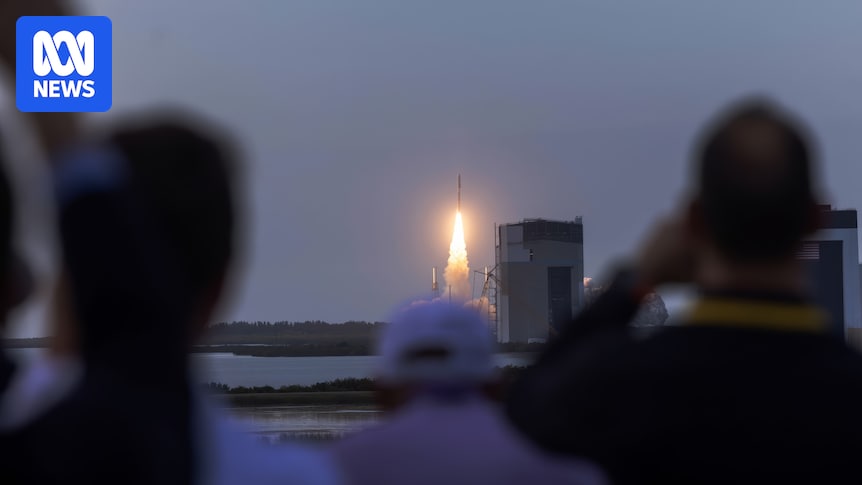Australia is set to get another satellite internet provider in 2026, giving SpaceX’s Starlink some long-awaited competition.
Government-owned NBN Co has partnered with Amazon to roll out high-speed broadband using 3,200 low Earth orbit (LEO) satellites from Amazon’s Project Kuiper.
Reliable connectivity in the bush is essential for emergency services. (ABC Midwest and Wheatbelt: Chris Lewis)
Starlink already has about 7,000 operational satellites providing internet to remote parts of the country.
With Amazon entering the game, there will soon be more than 10,000 LEO satellites focused on delivering high-speed internet — and that is not counting all the other satellites in orbit.
The new service is expected to launch in 2026, and NBN Co says it will offer a major upgrade in speed and reliability for people currently using its satellite network.
Since Sky Muster launched in 2015, ongoing issues with its reliability and performance prompted many internet users to switch to Starlink, which quickly became a popular provider thanks to its LEO satellites.
The transition from Sky Muster to LEO satellites has sparked hopes that a bit of competition might finally benefit regional users.
Amazon’s KA-01 mission launch earlier this year. (Supplied: Amazon Project Kuiper)
NBN Co’s chief development officer for regional and remote services, Gavin Williams, said the partnership would benefit new and existing customers.
He said the new venture with Amazon would replace NBN’s Sky Muster, which is currently just two satellites 36,000 kilometres into space.
“The Kuiper constellation will be 3,200 satellites, so a lot more satellites, and in round numbers will be around 600 kilometres from Earth,” he said.
Amazon has built ground stations that will connect customers’ outdoor boxes with satellites. (Supplied: NBN Co)
Mr Williams said this would greatly increase the speed of the internet for up to 300,000 customers.
“In an online world, the imperatives and significance of fast and reliable broadband in remote parts of the country [is vital],” he said.
“If your home-based classroom’s offline, you can’t just pop the kids down to school.
“If your online shop doesn’t work, you can’t just pop down to Woolies down the street.
“It’s literally and figuratively a lifeline for customers in remote WA.”
The new satellite service will bring connectivity to isolated places within Australia. (ABC Midwest and Wheatbelt: Chris Lewis)
Technology critical for remote towns
For remote areas, such as the Shire of Yalgoo, CEO Ian Holland said satellite technology was important for emergency services.
“A lot of our area historically hasn’t been covered by anything other than a really slow-to-connect sat [satellite] phone,” Mr Holland said.
“We’ve had some investment for Starlink units for our fire trucks, and I know that other emergency services such as WA Police and St John have been rolling out LEO equipment as well.
“Even just being able to make that phone call, talking with RFDS about a medical emergency, and anything that makes response faster and allows people to be tracked down faster is a massive boom to emergency services out here.”
Ian Holland says while the satellites are great for isolated locations, the night sky becomes full of streaking satellites. (ABC Midwest and Wheatbelt: Chris Lewis)
Mr Holland said that while competition between companies would be a win for consumers, the night sky was already getting crowded with satellites.
Staying connected wherever we are comes at a cost.
“From a night sky perspective, we can already look up and see the trails of these objects flying through,” Mr Holland said.
“I think that’s the reality of where technology is going within this space.”

